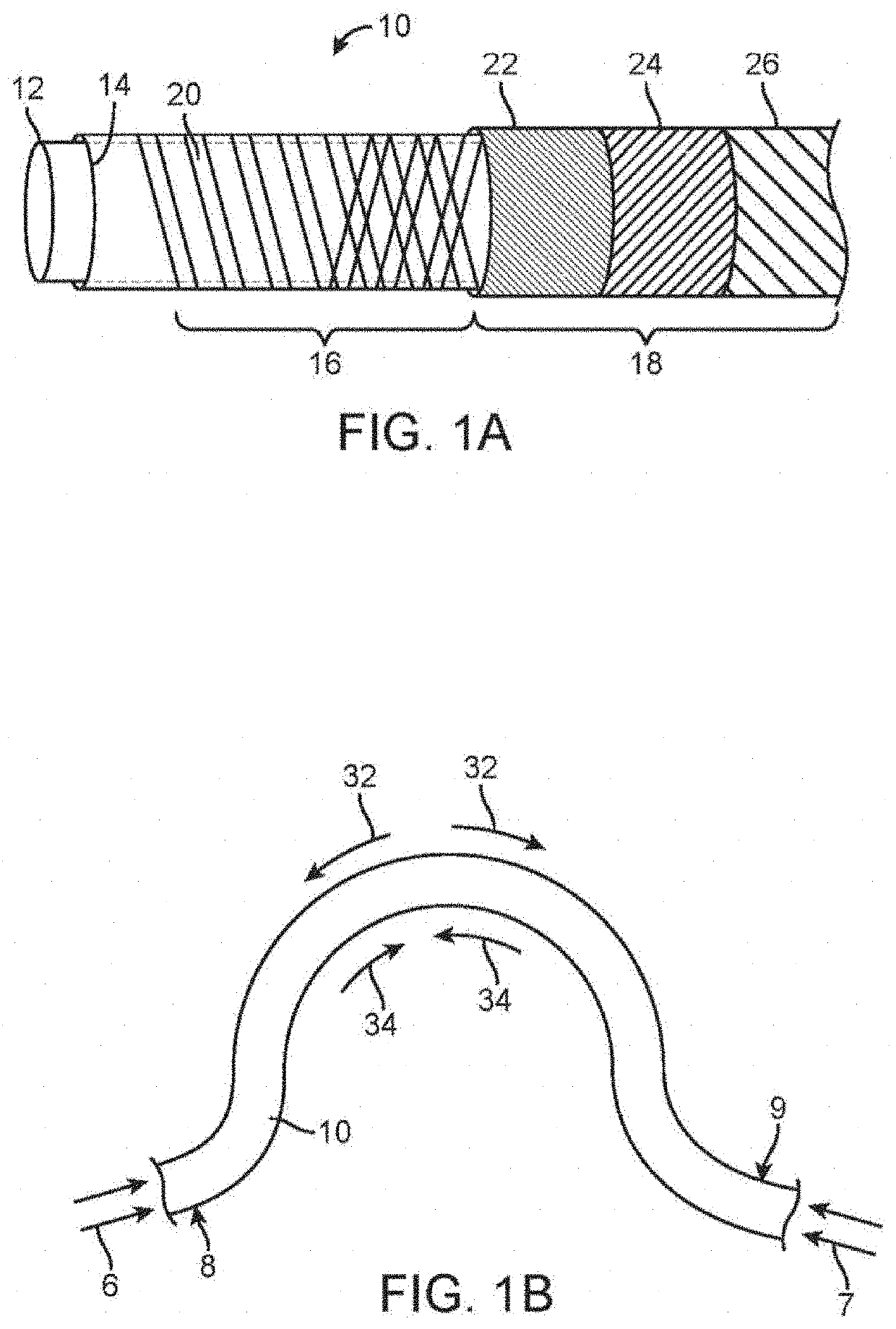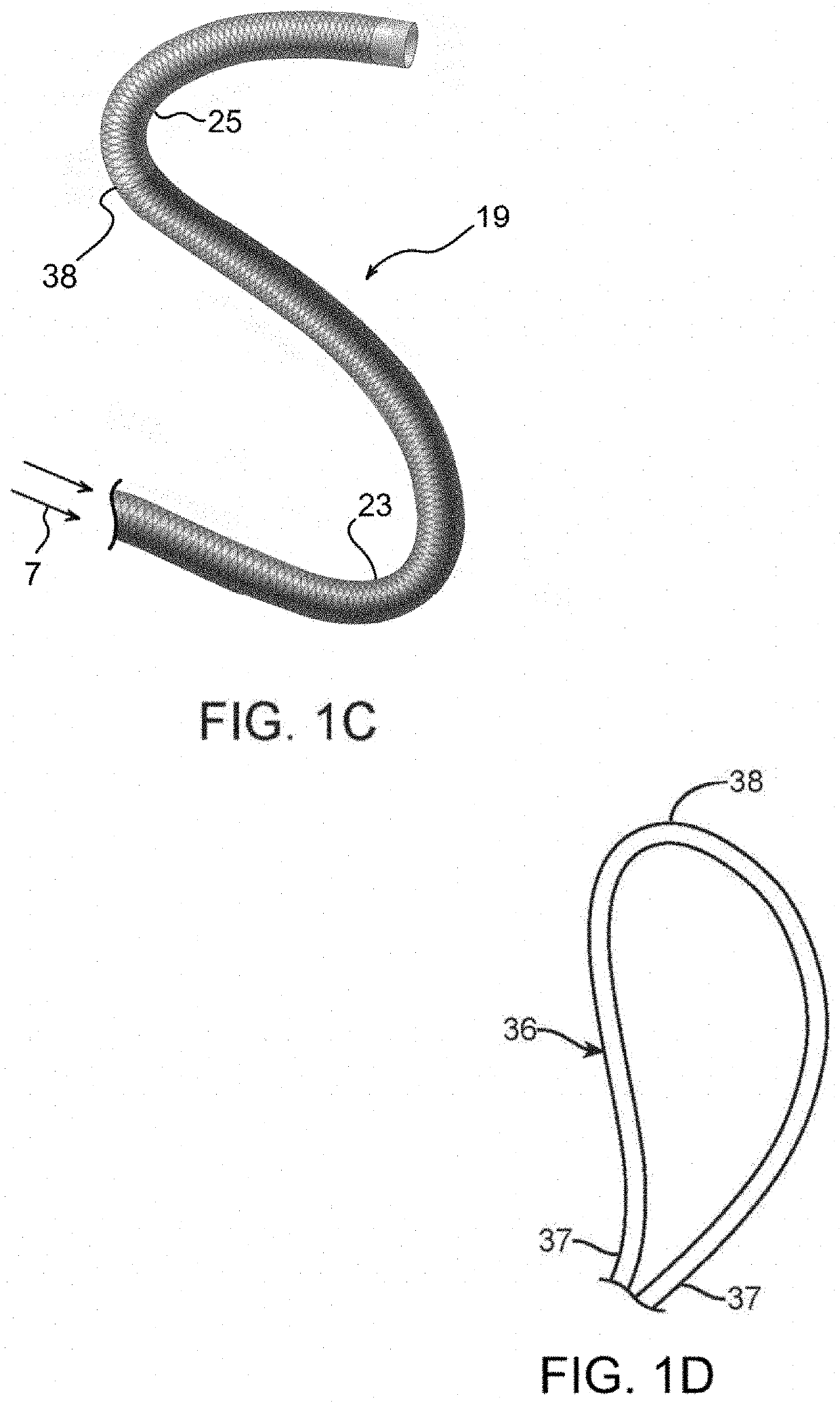Catheter constructions
a catheter and construction technology, applied in the field of catheter constructions, can solve the problems of poor flexibility, rotational/axial stability, and difficult catheter design to meet the requirements of tortuous anatomy, and achieve the effect of improving the transition
- Summary
- Abstract
- Description
- Claims
- Application Information
AI Technical Summary
Benefits of technology
Problems solved by technology
Method used
Image
Examples
Embodiment Construction
[0078]The catheter configuration discussed herein can be used in a variety of devices where different regions are selected for customized properties. The configurations described herein can be incorporated into various medical devices or can be used as catheter shafts. Furthermore, in some variations, the construction features of the present disclosure are not limited to in-dwelling medical devices and can be used for any device requiring tubing.
[0079]The polymeric tubing described herein can be constructed in any manner that allows the material section configurations (and hybrid-regions) disclosed below. Such manufacturing means includes, but is not limited to: forming the polymeric tube by winding directly onto catheter shaft; forming the strands into composite sheets and then winding the sheet onto a structure to complete a catheter shaft; and / or first winding ribbons / strands onto a mandrel or support structure, then fusing the material into a tube, then transferring onto a cathe...
PUM
 Login to View More
Login to View More Abstract
Description
Claims
Application Information
 Login to View More
Login to View More - R&D
- Intellectual Property
- Life Sciences
- Materials
- Tech Scout
- Unparalleled Data Quality
- Higher Quality Content
- 60% Fewer Hallucinations
Browse by: Latest US Patents, China's latest patents, Technical Efficacy Thesaurus, Application Domain, Technology Topic, Popular Technical Reports.
© 2025 PatSnap. All rights reserved.Legal|Privacy policy|Modern Slavery Act Transparency Statement|Sitemap|About US| Contact US: help@patsnap.com



